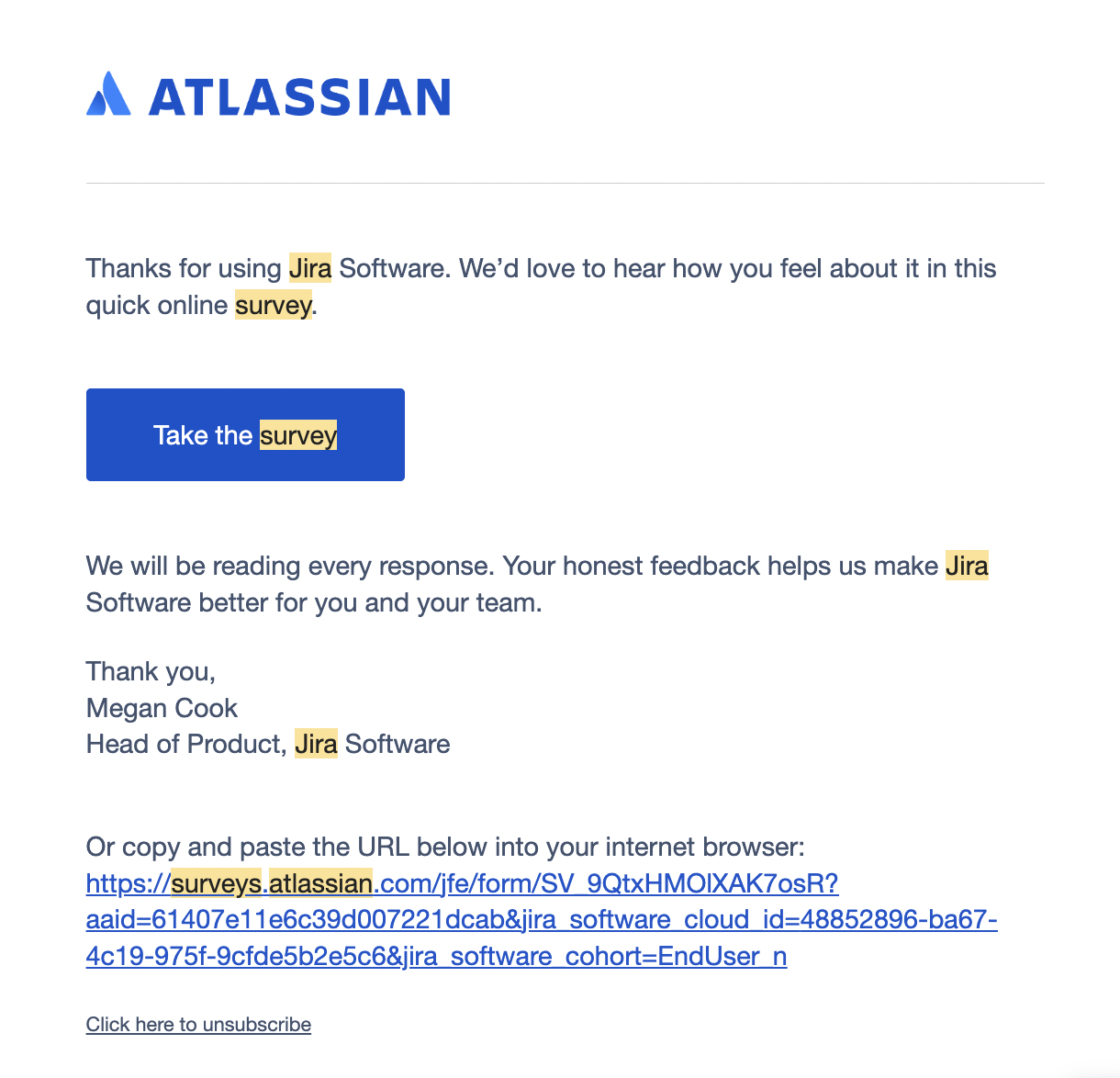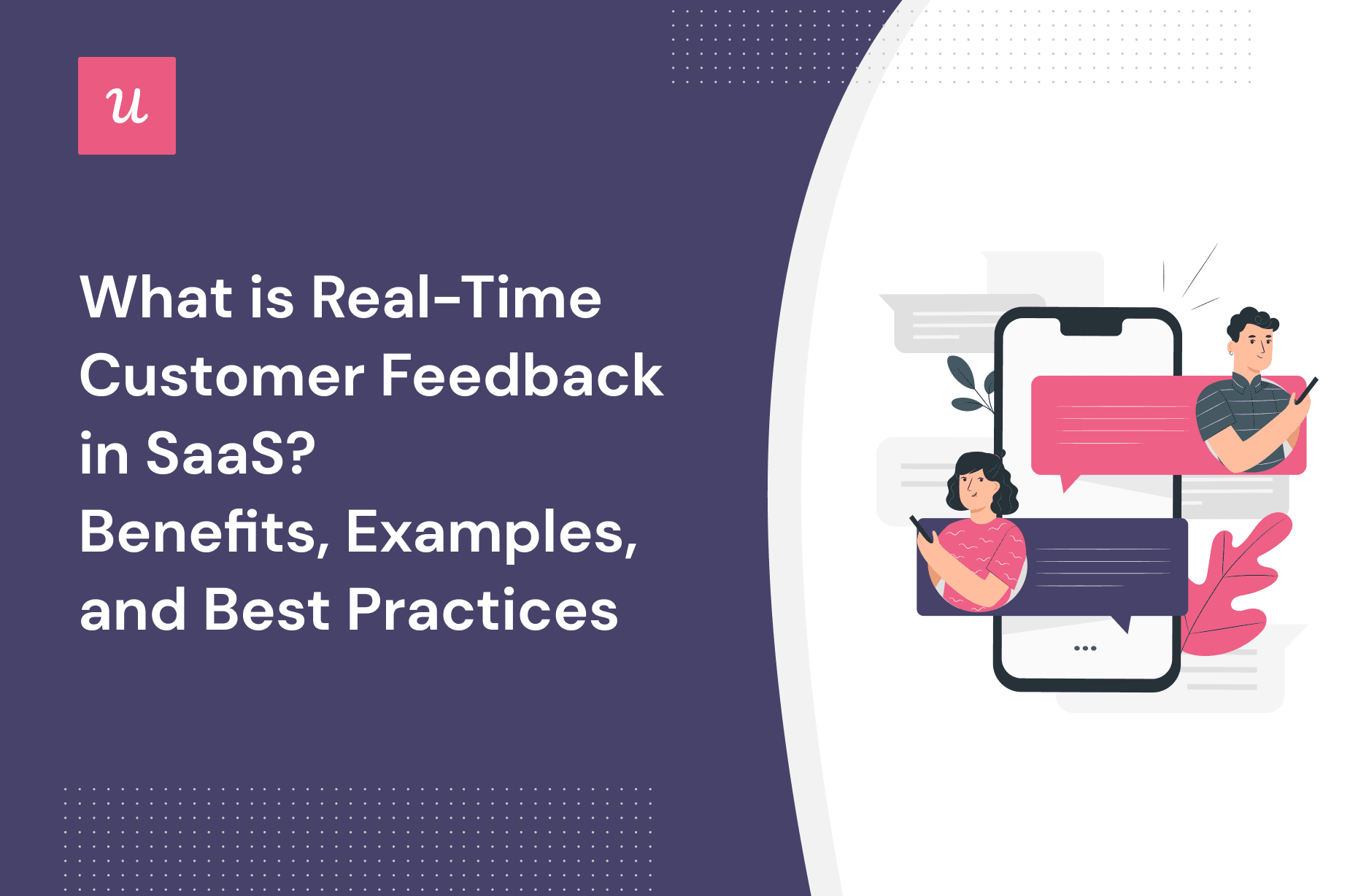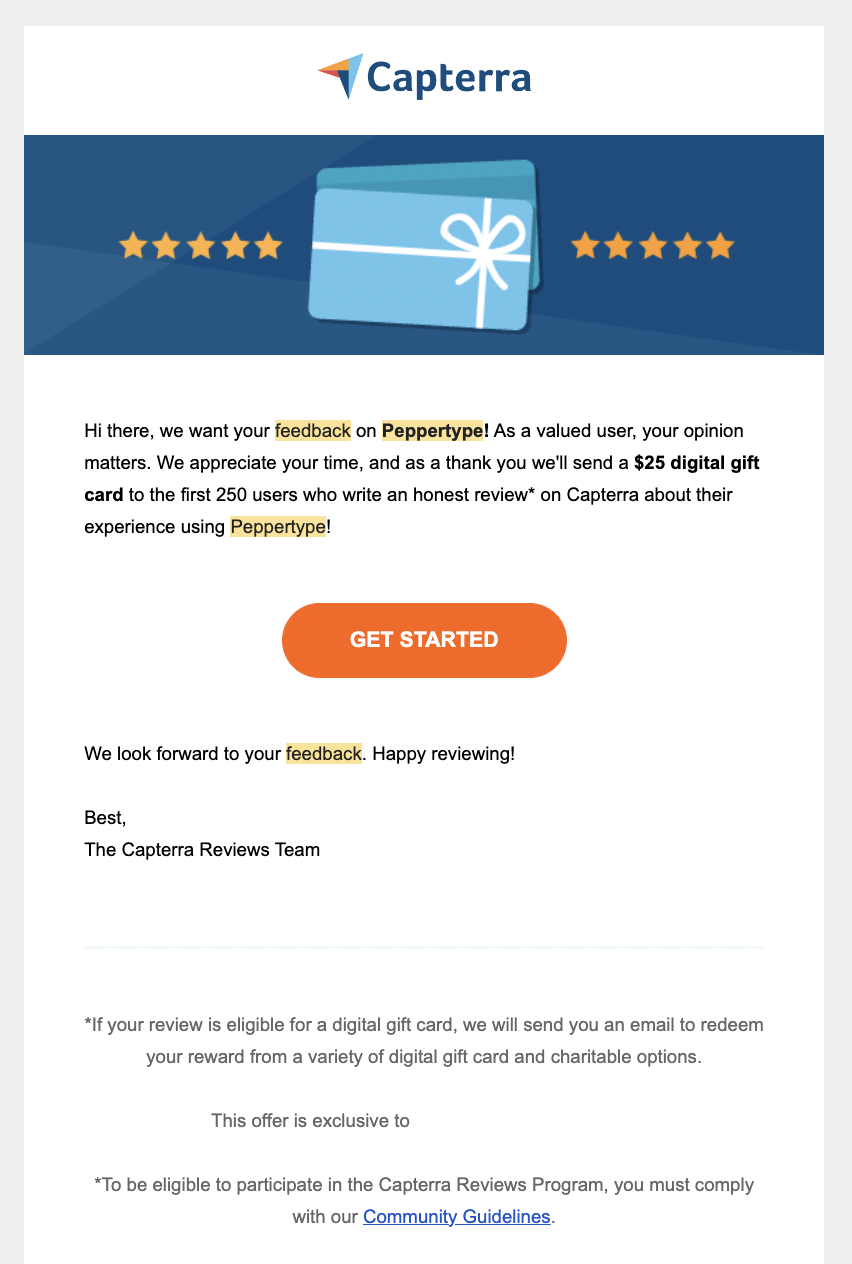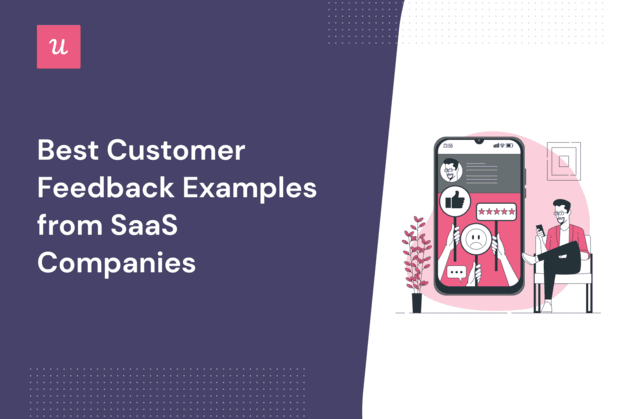SaaS customer feedback examples include user satisfaction surveys and feature request submissions. These insights help improve product development and user experience.
SaaS (Software as a Service) platforms thrive on user feedback to enhance their offerings and maintain customer satisfaction. Collecting and analyzing customer feedback enables businesses to identify strengths and areas for improvement. User satisfaction surveys often gauge overall experience, usability, and support effectiveness.
Feature request submissions allow customers to suggest new functionalities, helping prioritize development efforts. Regularly gathering and acting on this feedback ensures the SaaS product evolves in line with user needs. This practice not only boosts customer loyalty but also drives continuous innovation. Effective customer feedback mechanisms are crucial for sustained growth and competitive advantage in the SaaS industry.
Importance Of Customer Feedback
Customer feedback is vital for SaaS businesses. It helps improve products and services. Listening to users can lead to better customer satisfaction. This feedback drives product development and innovation. Let’s explore why feedback matters and its impact on user satisfaction.
Why Feedback Matters
Customer feedback offers insights into what users like and dislike. This information helps companies make informed decisions. It can highlight issues that need fixing. Feedback also shows what features users appreciate. Understanding these elements helps companies prioritize their efforts. It leads to better product development.
Feedback can also boost customer loyalty. When users see that their feedback is valued, they feel more connected. This connection can lead to longer relationships with the product. Companies that listen to feedback can build trust with their users.
Impact On User Satisfaction
User satisfaction is crucial for any SaaS business. Happy users are more likely to stay and recommend the product. Feedback helps identify what makes users happy. It also pinpoints areas that need improvement.
Companies can use feedback to make user-centric changes. These changes can improve the overall user experience. When users see their feedback implemented, they feel valued. This can lead to higher satisfaction rates.
Let’s look at some common feedback sources:
| Source | Type of Feedback |
|---|---|
| Surveys | Structured questions and ratings |
| Emails | Detailed, personalized feedback |
| Social Media | Public opinions and comments |
| In-app Feedback | Real-time user experience |
Each source offers unique insights. Combining these sources provides a comprehensive view of user satisfaction. This helps SaaS businesses make better decisions.
Types Of Customer Feedback
Understanding customer feedback is crucial for any SaaS business. Feedback helps improve products and services. There are two main types of feedback: direct and indirect. Each type provides unique insights into customer experiences.
Direct Feedback
Direct feedback comes straight from customers. They express their opinions through various channels. Here are some common methods:
- Surveys: Customers answer specific questions about your product.
- Interviews: One-on-one conversations for in-depth insights.
- Feedback Forms: Simple forms on websites for quick opinions.
- Reviews: Customers leave ratings and comments on review sites.
Direct feedback is valuable because it is specific and targeted. It helps identify exact areas for improvement.
Indirect Feedback
Indirect feedback is not given directly to you. It is gathered from various sources where customers express their views. Common sources include:
- Social Media: Comments and posts about your product.
- Usage Data: Analyzing how customers use your product.
- Customer Support Interactions: Insights from support tickets and chats.
- Online Forums: Discussions about your product on third-party sites.
Indirect feedback is useful for understanding overall sentiment and trends. It shows how customers feel about your product in a natural setting.
| Feedback Type | Examples | Benefits |
|---|---|---|
| Direct Feedback | Surveys, Interviews, Reviews | Specific insights, targeted improvements |
| Indirect Feedback | Social Media, Usage Data, Forums | Overall sentiment, natural customer views |
Collecting Customer Feedback
Gathering customer feedback is crucial for any SaaS business. It helps in understanding user needs, refining products, and improving customer satisfaction. There are several effective methods to collect feedback, which include surveys and questionnaires, and user interviews.
Surveys And Questionnaires
Surveys and questionnaires are popular for collecting customer opinions. They allow you to gather data quickly and efficiently.
- Surveys: Online surveys can reach a large audience. Platforms like SurveyMonkey and Google Forms are useful.
- Questionnaires: These can include multiple-choice, rating scales, or open-ended questions. They provide structured data for analysis.
Here’s a sample of questions you might ask:
| Question | Type |
|---|---|
| How satisfied are you with our product? | Rating Scale |
| What features do you find most useful? | Multiple Choice |
| How can we improve our service? | Open-Ended |
User Interviews
User interviews offer in-depth insights. They involve direct conversations with users to gather qualitative data.
- Preparation: Identify key users to interview. Prepare a list of questions.
- Conducting: Use video calls or face-to-face meetings. Record the sessions for accuracy.
- Analysis: Review recordings. Identify common themes and actionable insights.
Sample questions for user interviews:
- What challenges do you face with our product?
- How does our product help you in your daily tasks?
- What improvements would you like to see?
Interviews provide valuable feedback that surveys might miss. They help in understanding the user experience deeply.

Credit: userlist.com
Analyzing Feedback Data
Analyzing feedback data is crucial for improving your SaaS product. It helps you understand what your customers need and want. By analyzing this data, you can make informed decisions that enhance user experience.
Qualitative Analysis
Qualitative analysis focuses on the emotional and subjective aspects of feedback. It involves understanding customer sentiments and identifying common themes. This type of analysis is essential for grasping the underlying reasons behind customer opinions.
- Read through customer reviews and comments.
- Identify recurring themes and concerns.
- Group similar feedback together.
- Highlight emotional language used by customers.
Use this analysis to pinpoint specific areas for improvement. For instance, if many users express frustration with a feature, it signals the need for refinement.
Quantitative Analysis
Quantitative analysis involves crunching numbers and identifying trends. It helps you measure the impact of feedback on your business.
| Metric | Description | Example |
|---|---|---|
| Net Promoter Score (NPS) | Measures customer loyalty. | 8 out of 10 |
| Customer Satisfaction Score (CSAT) | Evaluates customer happiness. | 4 out of 5 |
| Customer Effort Score (CES) | Assesses ease of service use. | 5 out of 7 |
Use these metrics to track progress over time. For example, a rising NPS indicates increasing customer satisfaction.
Combining both types of analysis offers a holistic view. Qualitative insights provide context, while quantitative data offers measurable results. Together, they help you make informed decisions and improve your SaaS product.
Implementing Feedback
Gathering customer feedback is crucial for any SaaS business. But the real value lies in how you implement that feedback. This section will guide you through the process of turning feedback into actionable improvements.
Prioritizing Changes
Not all feedback is equal. Some suggestions are more impactful. Here are ways to prioritize changes:
- Urgency: Address issues that impact many users.
- Feasibility: Consider the resources required for implementation.
- Strategic Alignment: Ensure changes align with your business goals.
Use a feedback matrix to categorize feedback:
| Category | Urgency | Feasibility | Alignment |
|---|---|---|---|
| Feature Requests | High | Medium | Strong |
| Bug Fixes | Critical | High | Essential |
| User Experience | Medium | Medium | Moderate |
Actionable Steps
Turning feedback into action requires a structured approach. Follow these steps:
- Analyze Feedback: Identify common themes and recurring issues.
- Create a Plan: Develop a roadmap for implementing changes.
- Assign Responsibilities: Ensure each task has a dedicated owner.
- Set Deadlines: Define clear timelines for each action item.
- Monitor Progress: Track the implementation process and make adjustments as needed.
Remember, consistent communication with your team is key. Use tools like Trello or Asana to manage tasks.
Case Studies Of Successful Feedback Implementation
SaaS companies benefit greatly from customer feedback. Feedback helps improve products and services. Below are examples of successful feedback implementation.
Case Study 1: Improved User Interface
A leading SaaS company received feedback about its user interface (UI). Users found it confusing and cluttered. The company decided to act on this feedback.
- Feedback Collection: Surveys, user interviews, and support tickets.
- Identified Issues: Navigation difficulties, unclear icons, and slow response times.
- Implemented Changes:
- Simplified navigation menus
- Redesigned icons for clarity
- Optimized UI for faster load times
After these changes, users reported a better experience. The company saw a 30% increase in user satisfaction.
Case Study 2: Enhanced Customer Support
Another SaaS company faced issues with customer support. Feedback indicated long response times and lack of helpful answers.
- Feedback Collection: Customer support surveys and direct feedback.
- Identified Issues: Delayed responses and insufficient problem resolution.
- Implemented Changes:
- Hired additional support staff
- Provided extensive training for support teams
- Introduced a knowledge base for common issues
Post-implementation, the company saw a 40% decrease in response times. Customer satisfaction improved significantly.
Tools For Gathering Feedback
Gathering customer feedback is crucial for any SaaS business. Understanding customer needs can help improve your product and services. Various tools can assist in collecting this valuable feedback. Let’s explore some of the most effective tools available.
Feedback Software
Feedback software helps gather customer opinions and suggestions. These tools offer features like surveys, polls, and feedback forms. Here are some popular feedback software:
- SurveyMonkey – Create and send surveys effortlessly.
- Typeform – Engage customers with interactive forms.
- Qualtrics – Advanced survey platform with analytics.
- Google Forms – Simple, free tool for basic surveys.
Using these tools, you can collect structured data from your customers. This data helps in making informed decisions.
Integration With Crm
Integrating feedback tools with CRM systems enhances their utility. This integration ensures all feedback is stored centrally. It also provides a comprehensive view of customer interactions. Here are some CRM systems that support feedback integration:
| CRM System | Feedback Tool Integration |
|---|---|
| Salesforce | Qualtrics, SurveyMonkey |
| HubSpot | Typeform, SurveyMonkey |
| Zoho CRM | Google Forms, Typeform |
By integrating feedback tools with CRM, you can track customer satisfaction. This helps in identifying areas for improvement.

Credit: userpilot.com
Best Practices
Gathering customer feedback is vital for any SaaS business. It helps in improving products and services. To get the best results, follow these best practices. They ensure meaningful and actionable feedback.
Regular Feedback Collection
Consistent feedback collection keeps you updated with customer needs. Use various channels like surveys, emails, and in-app messages.
- Send short surveys after major updates.
- Use Net Promoter Score (NPS) surveys quarterly.
- Ask for feedback during customer support interactions.
Automated feedback tools can make this process seamless. Set reminders for feedback requests. Ensure the process is simple for customers. A happy customer is more likely to provide honest feedback.
| Feedback Method | Frequency |
|---|---|
| Email Surveys | Monthly |
| In-App Messages | Quarterly |
| Customer Support Follow-ups | Ongoing |
Transparent Communication
Clear communication builds trust with your customers. Always inform them why their feedback matters.
- Explain how feedback improves the service.
- Share what actions you took based on their input.
- Thank them for their valuable suggestions.
Regular updates on changes made from feedback can be shared via newsletters or product updates. This keeps customers engaged and valued.
Using these best practices ensures you get valuable customer insights. This helps in creating a better product and a loyal customer base.

Credit: userlist.com
Frequently Asked Questions
What Is Saas Customer Feedback?
SaaS customer feedback is input from users about their experience with a SaaS product. This feedback helps improve features, fix bugs, and enhance user satisfaction.
Why Is Customer Feedback Important For Saas?
Customer feedback is crucial for SaaS as it helps identify strengths and weaknesses. It guides product development, improves user experience, and boosts customer retention.
How To Collect Saas Customer Feedback?
Collect SaaS customer feedback through surveys, in-app prompts, emails, and user interviews. Use analytics tools to gather data on user behavior and preferences.
What Are Examples Of Good Saas Feedback Questions?
Good SaaS feedback questions include: “How satisfied are you with our service? ” And “What features would you like to see? “
Conclusion
Gathering feedback from customers is crucial for SaaS growth. Use these examples to enhance your strategy. Implementing effective feedback can lead to improved customer satisfaction and retention. Remember, your customers’ voices are powerful tools for continuous improvement and success in the SaaS industry.
Keep refining your approach for better results.
